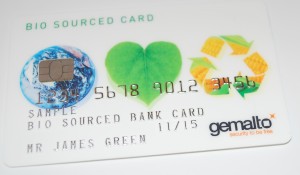What if you could make banking cards or any cards from veggies you find in your garden? Unfortunately, it is not edible, but is recyclable. It may sound too good to be true, but digital security is going green and has been for the past couple of years.
People are becoming increasingly environmentally conscious and it’s nice to see banks and digital security following the trend. Actions to “go green” like e-banking are actually benefiting both the environment and business. E-statements and other online banking tools are taking paper out of the equation and reducing bank’s overhead costs.
Green banking is part of a movement called sustainable banking, a concept that is twofold. One aspect looks at a bank’s social and environmental programs and donations, while the latter is focused on the internal initiatives of the bank. There are varying degrees of participation from banks but many see the advantages in the long term. The question remains is sustainable banking profitable? A recent study by the Global Alliance for Banking Values would suggest “sustainable banks deliver higher returns.”

We are working towards going green in digital security and the card is not only bringing environmental sustainability to banks but to Gemalto too. Every year we produce around 600 million bank cards which converted into corn equals roughly 7,000 tons. It may seem like a lot of corn, but take Nebraska for example, which produces 35 million tons of corn; our corn consumption is a drop in the bucket.
The “corn card” has the potential to transform the reputation of banks and big players like Raffeisen, Lloyds, Visa and even MasterCard are going green. As someone who is environmentally conscious, I am excited about getting my hands on a Bio Card in the near future. Let us know what you think about using a bio card.


